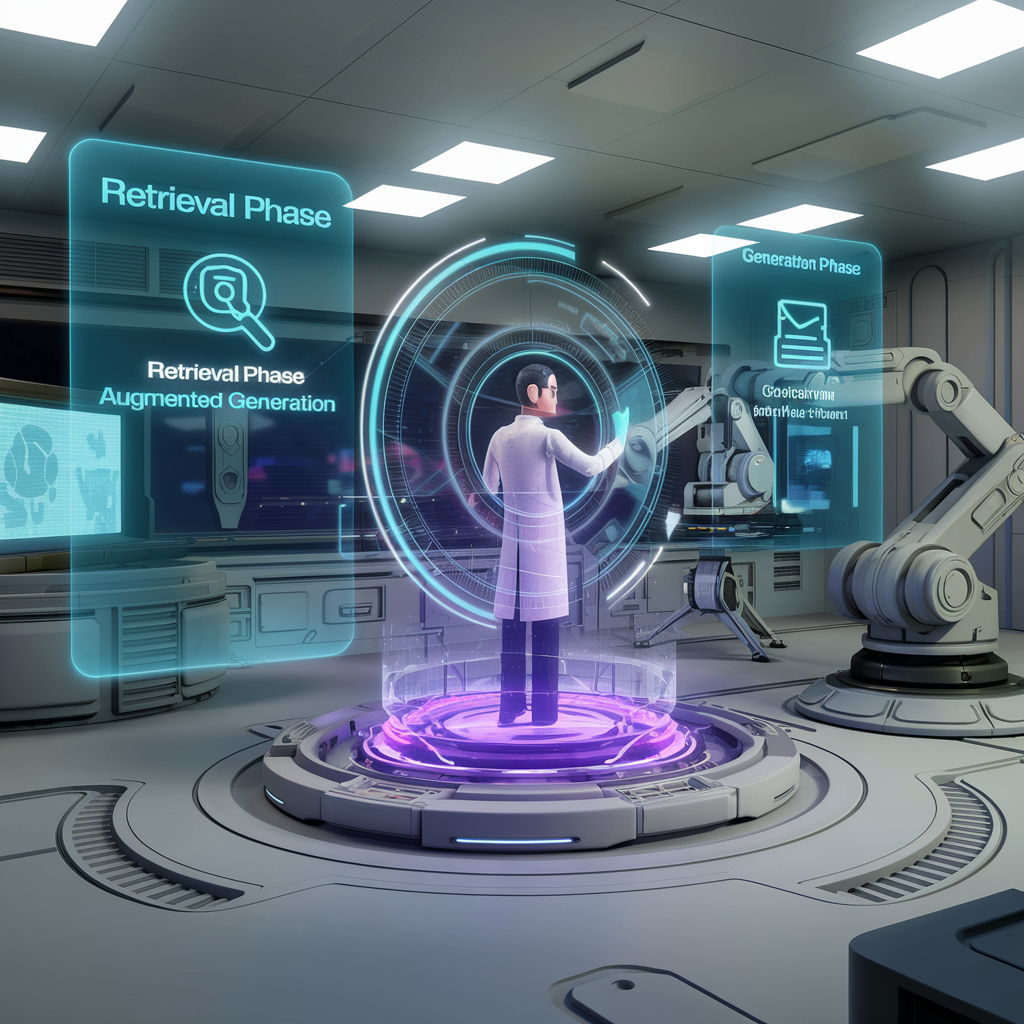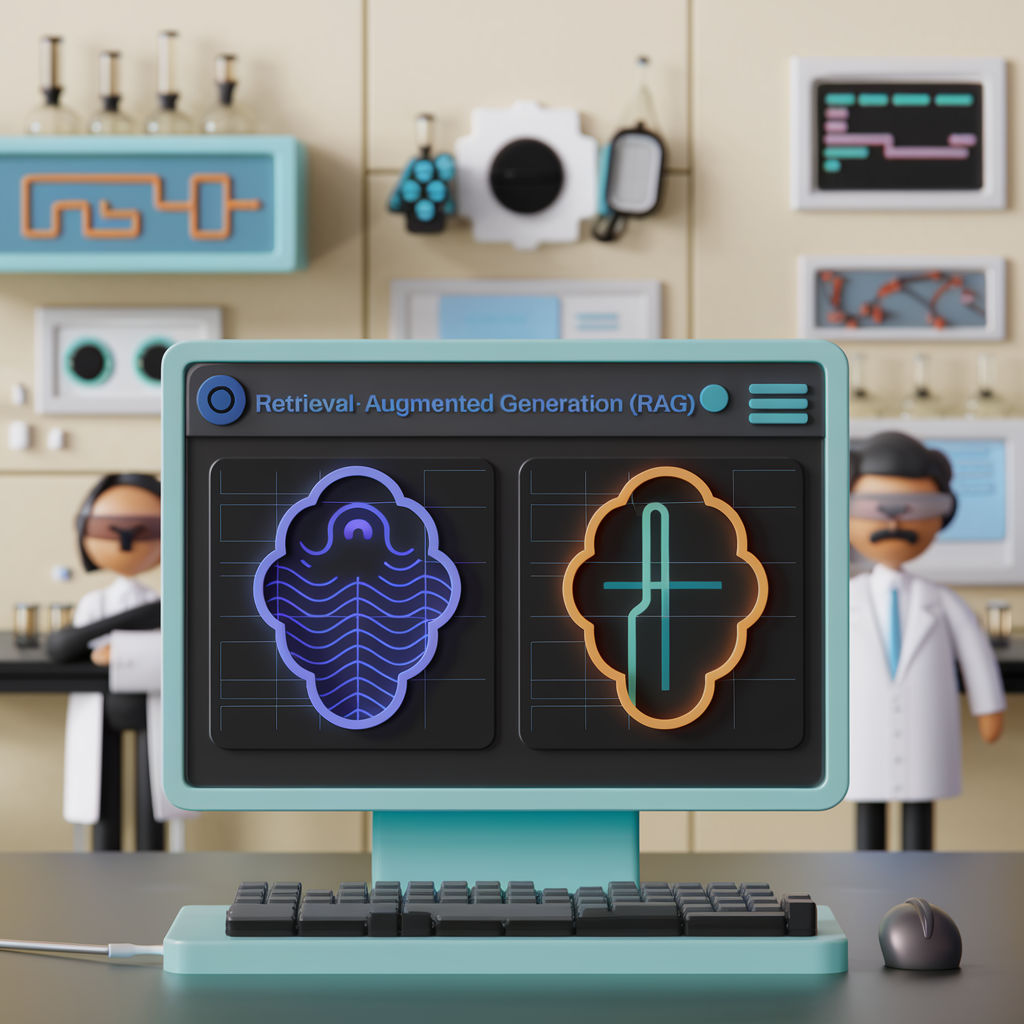Artificial Intelligence (AI) continues to revolutionise the way we interact with technology, enhancing various applications from customer service to complex data analysis. One of the cutting-edge techniques driving this innovation is Retrieval-Augmented Generation (RAG). Combining the strengths of information retrieval and generative models, RAG has become a game-changer in the field of AI. This definitive guide will delve into the intricacies of RAG, exploring how it works, its benefits, and its diverse applications.
Topic Breakdown
Understanding Retrieval-Augmented Generation (RAG)
What is Retrieval-Augmented Generation?
Retrieval-Augmented Generation (RAG) is an advanced AI technique that merges two core components: information retrieval and text generation. It leverages large-scale retrieval systems to find relevant information and integrates it with generative models to produce coherent and contextually appropriate responses. This approach significantly enhances the accuracy and relevance of AI-generated content.
How Does RAG Work?
RAG operates through a two-step process:
- Retrieval Phase:
- In this phase, the system searches a vast database or knowledge base to retrieve relevant information based on the input query.
- The retrieval model, often a transformer-based model like BERT, identifies and ranks the most pertinent documents or passages.
- Generation Phase:
- The retrieved information is then fed into a generative model, such as GPT-4, which uses this data to generate a response.
- The generative model combines the context from the input query with the retrieved data to produce a high-quality, contextually accurate output.
Combining retrieval and generation allows RAG to overcome the limitations of standalone generative models, which may sometimes produce less accurate or less relevant responses.

Benefits of Retrieval-Augmented Generation
Enhanced Accuracy and Relevance
By integrating relevant information retrieved from extensive databases, RAG models can generate responses that are not only more accurate but also highly relevant to the input query. This makes RAG particularly useful in applications requiring precise and contextually appropriate answers.
Improved Performance on Knowledge-Intensive Tasks
RAG excels in tasks that require access to specific knowledge or detailed information. By leveraging retrieval systems, RAG can handle complex queries and provide detailed responses, making it ideal for applications such as customer support, research, and technical documentation.
Scalability
RAG models can scale effectively by utilizing large-scale retrieval systems that index vast amounts of data. This scalability ensures that the system can handle a wide range of queries and provide accurate responses even as the knowledge base grows.
Reduced Hallucination
One of the challenges with generative models is their tendency to “hallucinate” or generate plausible-sounding but incorrect information. RAG mitigates this issue by grounding the generation process in real, retrieved data, thus enhancing the reliability of the generated content.
Applications of Retrieval-Augmented Generation
Businesses are increasingly adopting RAG technologies to enhance customer service, decision-making, and content production. Implementing RAG has become essential for companies striving to maintain a competitive edge in an AI-driven market.

Customer Support
In customer support, RAG models can provide accurate and relevant responses to customer queries by retrieving information from a comprehensive knowledge base. This can significantly improve customer satisfaction and reduce response times.
Research and Development
RAG can assist researchers by retrieving relevant studies, papers, and data, and then generating summaries or insights based on this information. This can expedite the research process and ensure that researchers have access to the most pertinent information.
Educational Tools
Educational platforms can leverage RAG to provide students with accurate and contextually relevant information. Whether it’s answering questions, providing explanations, or generating learning materials, RAG can enhance the educational experience.
Technical Documentation
For creating and maintaining technical documentation, RAG can retrieve the latest technical specifications, updates, and guidelines, and generate comprehensive documentation that is up-to-date and accurate.
Content Creation
RAG can assist content creators by providing relevant information and generating well-informed and contextually appropriate content. This can be particularly useful for writing articles, creating reports, and developing marketing materials.
Implementing Retrieval-Augmented Generation
Building a RAG Model
Building a RAG model involves several steps:
- Data Collection:
- Gather a comprehensive knowledge base or dataset that the retrieval system will use to find relevant information.
- Training the Retrieval Model:
- Train a retrieval model, such as a transformer-based model, to accurately retrieve relevant documents or passages based on input queries.
- Training the Generative Model:
- Train a generative model to produce coherent and contextually appropriate responses using the retrieved data.
- Integration:
- Integrate the retrieval and generative models to create a cohesive RAG system that can handle input queries and generate accurate responses.
- Evaluation and Fine-Tuning:
- Continuously evaluate the performance of the RAG model and fine-tune it to improve accuracy, relevance, and overall performance.
Challenges and Considerations
While RAG offers numerous benefits, implementing it comes with its own set of challenges:
- Data Quality:
- The quality of the retrieved information heavily influences the performance of the RAG model. Ensuring a high-quality, comprehensive knowledge base is crucial.
- Computational Resources:
- Training and deploying RAG models require significant computational resources, particularly for handling large-scale retrieval and generation tasks.
- Integration Complexity:
- Integrating retrieval and generative models can be complex and requires careful engineering to ensure seamless operation.
- Evaluation Metrics:
- Developing appropriate evaluation metrics to assess the performance of RAG models can be challenging, particularly for complex queries and diverse applications.
- Dataset Biases:
- RAG systems face the risk of amplifying biases present in datasets. Ensuring the responsible and ethical use of RAG technologies requires strategies to mitigate these biases, maintaining the integrity and fairness of AI-generated content.

Future of Retrieval-Augmented Generation
The future of RAG looks promising as it continues to evolve, with several advancements and enhanced capabilities on the horizon:
- Improved Retrieval Models:
- Recent developments have introduced adaptive retrieval mechanisms that adjust based on user intent and query complexity. These mechanisms utilise reinforcement learning to optimise the selection of external data sources in real-time, enhancing the precision and adaptability of RAG systems.
- Enhanced Generative Models:
- Advances in generative models, such as GPT-4, will further improve the quality of generated content, making RAG even more powerful.
- Multimodal RAG:
- Integrating multimodal capabilities, such as combining text, images, and audio, can expand the applications of RAG and enhance its performance.
- Domain-Specific RAG:
- Developing domain-specific RAG models or AI agents facilitated by RAG 2.0 platforms, tailored to particular industries or applications, providing highly specialised and relevant responses.
- User-Friendly Interfaces:
- Creating user-friendly interfaces and tools for building and deploying RAG models will democratize access to this advanced AI technology.
- Emerging Alternatives: Cache-Augmented Generation (CAG)
- An alternative approach, Cache-Augmented Generation (CAG), has gained attention. CAG involves preloading all relevant resources into the model’s context, allowing the model to generate responses directly without real-time retrieval. This method reduces latency and complexity, especially for smaller workloads, by eliminating the retrieval step.
Conclusion
Retrieval-Augmented Generation (RAG) represents a significant advancement in the field of AI, combining the strengths of retrieval and generation to deliver accurate, relevant, and contextually appropriate responses. Its applications span across various domains, from customer support to research and content creation, demonstrating its versatility and potential.
As RAG technology continues to evolve, it promises to unlock new possibilities and drive further innovation in AI. By addressing current challenges and leveraging ongoing advancements, RAG will undoubtedly play a crucial role in shaping the future of AI-powered applications.
For those looking to implement RAG, understanding its intricacies and potential applications is key to harnessing its full potential. With the right approach, RAG can revolutionize how we interact with technology and access information, making it an indispensable tool in the AI landscape.
By embracing these advancements and best practices, stakeholders can leverage RAG’s full potential, ensuring its applications remain effective and relevant in 2025 and beyond.
Interested in RAG for your business?